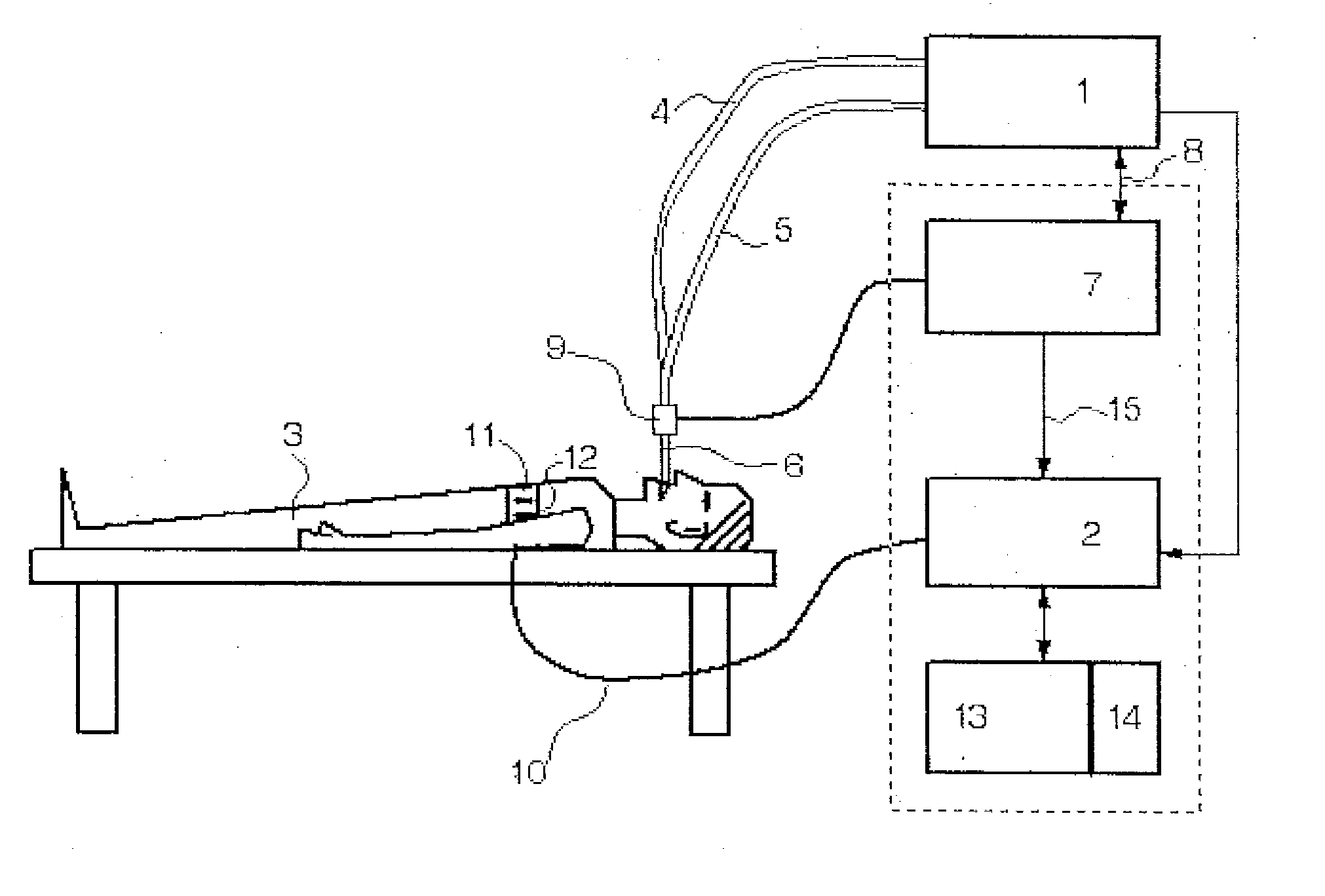Device and process for controlling a respirator
a technology of respirator and process, which is applied in the direction of valve operating means/release devices, applications, diagnostic recording/measuring, etc., can solve the problems of disadvantageous effect of these methods on patients, information on the frc and the change in the frc are usually unavailable,
- Summary
- Abstract
- Description
- Claims
- Application Information
AI Technical Summary
Benefits of technology
Problems solved by technology
Method used
Image
Examples
Embodiment Construction
[0023] Referring to the drawings in particular, FIG. 1 schematically illustrates the course of impedance measured signals U during the alternation of mechanical respiration, respiration phase 1, at the time of a recruitment maneuver, respiration phase 2, and back to mechanical respiration, respiration phase 3.
[0024] An electroimpedance measurement is carried out during respiration phase 1 during as uniform respiration as possible. Since the tidal volume VT is known from the respirator, this can be used to determine the volume factor cv during respiration phase 1. After the end of the recruitment maneuver during respiration phase 2, the electroimpedance measurement is continued in respiration phase 3 in order to find possible differences in local ventilation compared to respiration phase 1.
[0025] At least two ranges, within which at least two end-expiratory reference voltages Uref are determined and are used to determine the local change in FRC, are marked during the electroimpedan...
PUM
 Login to View More
Login to View More Abstract
Description
Claims
Application Information
 Login to View More
Login to View More - R&D
- Intellectual Property
- Life Sciences
- Materials
- Tech Scout
- Unparalleled Data Quality
- Higher Quality Content
- 60% Fewer Hallucinations
Browse by: Latest US Patents, China's latest patents, Technical Efficacy Thesaurus, Application Domain, Technology Topic, Popular Technical Reports.
© 2025 PatSnap. All rights reserved.Legal|Privacy policy|Modern Slavery Act Transparency Statement|Sitemap|About US| Contact US: help@patsnap.com



